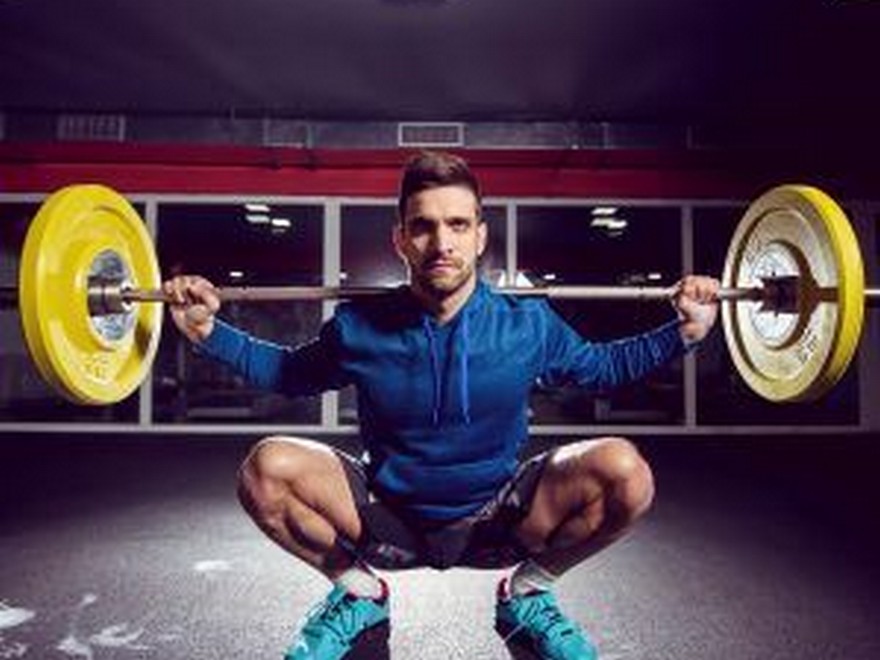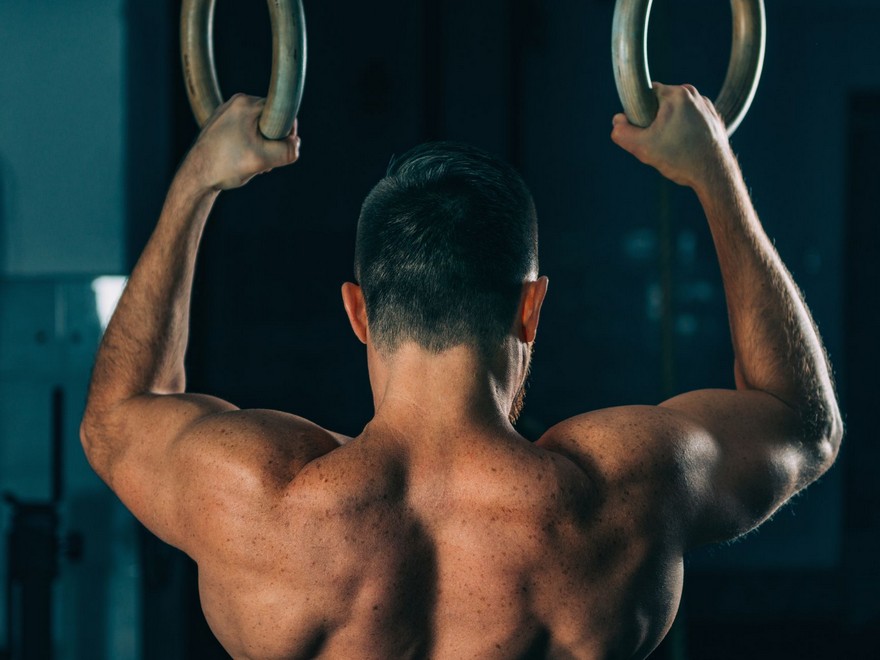The Thriller of Squat Type: How Low Ought to You Go, Actually?

Speaking about squats is loads like speaking about politics: Everybody has an opinion on what works and what doesn’t—and, chances are high, they’re keen about it.
However, it doesn’t take lengthy to comprehend that the squatting commandments you’ve been listening to for years are very flawed. Working example: ever been advised that your “knees shouldn’t go over your toes” throughout the squat? Someway, this concept has lived for many years even though it’s not true.
Mechanically assuming that your knees shouldn’t go over your toes is an effective way to make sure that you set lots of stress on different buildings, resembling your decrease again (on account of hips), hamstrings, and even your calves. When you’ve tried this strategy, you may discover that squatting abruptly feels very uncomfortable (notice: uncomfortable is completely different from troublesome). And, that’s by no means factor and certain an indication that the motion you’re forcing isn’t going to make your physique really feel good.
Analysis helps why permitting your knees to go over your toes isn’t essentially a nasty factor. In a single research, members had been restricted from transferring their knees in entrance of their toes. The outcomes? It led to a slight discount in knee torque (22%) however at the price of an enormous enhance in hip torque (1070%).
This implies that for those who apply a motion normal for everybody, it’s prone to trigger stress in unintended methods, and this huge enhance in stress is prone to result in accidents, aches, and pains.
It’s completely high-quality in your knees to go over your toes so long as your heels are planted on the bottom and your weight is balanced over your pure middle of gravity.
The one squat stance that’s “proper” is the one that’s suited in your physique. Which means it’s time to unlearn what you’ve been taught and begin determining a greater option to squat in your physique. When you do, all the things feels higher, hurts much less, and also you’ll change into stronger.
Is Squatting Good For You?
“Is it good to squat?” is a good query, however one with a straightforward reply. Sure. Sitting down and standing up is without doubt one of the most elementary actions in life.
Whether or not squatting is sweet shouldn’t be a debate, however type and depth are matters of intense disagreement. The most important factor it’s essential keep in mind is that everybody goes to squat a bit otherwise. Your squat type won’t seem like those you see within the photos or these little “squat type demonstration” illustrations.
Your knee attaches to three fundamental muscle teams: your hamstrings and calves within the again the quadriceps in entrance. These muscle mass additionally play a key function in your hip motion. Translation: When your muscle mass contract, they work collectively to stability out power and preserve your knees (and different buildings) wholesome.

Keep in mind the research we talked about above and the way it elevated hip torque by greater than 1,000 p.c? Attempting to observe these how-tos may be why your squat type doesn’t really feel fairly proper—or maybe why squats really feel painful. Following a motion constructed for another person’s physique kind isn’t a good suggestion.
This, after all, is the explanation why squats harm so many individuals, get a nasty fame, and why you might be usually tempted to skip this transfer in your exercise, regardless that you ought to do it.
Making issues worse, the extra that you simply examine squat type, the extra doubtless you might be to seek out conflicting data. On one facet you will have the purists. They’ll let you know that you simply should squat “ass-to-grass.”
On the reverse finish of the spectrum, are the overly cautious varieties who fear that squatting too low will harm your knees (it gained’t, by the best way). And there are many others who will advocate for stopping at seemingly each different level in between—thighs parallel to the bottom, or simply under it, or nicely above it (often called quarter squats), and on and on.
Nobody is “proper” however everyone seems to be fallacious except they’re exhibiting you ways to determine the fitting squat depth and stance in your physique.
“There’s nobody proper option to squat—and there’s nobody fallacious method, both,” says Dean Somerset, C.S.C.S., an train physiologist in Edmonton, Alberta Canada. “It’s all about discovering what works in your physique.”
What’s best for you relies on your targets, energy, and stage of mobility, that are issues you possibly can affect. However, not all the things that determines how nicely you squat is inside your management.
Your physique’s bone construction will have an effect on how you progress too. Due to all that, lots of the normal squat cues you hear about the place your ft needs to be or what route they need to level could not really be just right for you. (However don’t fear, we’ll present you what’s going to.)
The underside line: Neglect the politics. Neglect all of the “one-size-fits-all” opinions. There are lots of methods you possibly can go about fixing squats once they harm. We’re going to interrupt down the several types of squat depth and share a check that may assist you to begin to personalize your strategy.
By the point you’re carried out studying, you’ll know the fitting vary of movement in your physique, so you will get essentially the most out of the squat.
The Deep Squat
With the ability to execute a full deep squat is an effective factor, nevertheless it won’t be your factor. Doing the transfer requires a full vary of movement in any respect 4 of the physique’s main load-bearing joints (the ankles, knees, hips, and shoulders) and correct mobility all through the backbone. These joints, your muscle mass, and your mind all must work collectively to attain this place:

That demonstration comes from Georges Dagher, C.S.C.S, a chiropractor and energy coach based mostly in Toronto. He likens the deep squat to brushing your enamel. “From my perspective, the deep squat motion is a toothbrush for our joints, guaranteeing they’re all transferring with none sticky or restricted areas,” Dagher writes within the Journal of Evolution and Well being.
Simply as you sweep your enamel every single day, Dagher suggests performing at the least one body weight squat per day, as deep as you possibly can.
When you take a look at the photograph above and assume “no method,” don’t stress. A lot of folks have energy or mobility points that may make attaining a deep squat difficult—at the least at first.
The excellent news? By merely working in your deep body weight squat type, going as deep as you possibly can with management, and holding so long as you are feeling fairly snug, you’ll assist tackle and enhance these points.
“The positions we place our our bodies in will affect varied parts resembling muscle mass, which may enhance our consolation within the squat,” Dagher says.
You may also get extra snug by adjusting your stance. Somerset explains that the usual squatting place— “stand along with your ft shoulder-width aside…” —doesn’t apply to everybody. It’s extra of a basic advice or a mean, he says, not a hard-and-fast rule.
To assist his purchasers attain a deeper, pain-free squat, Somerset has them experiment with completely different stances till they discover one which feels proper.
“Consider it like going to the optometrist, once they put the lens in entrance of your eyes and ask which one is best,” Somerset says. “There’s nobody normal prescription. It’s about discovering the fitting one for you.”
Listed below are the 2 fundamental parts Somerset asks purchasers to regulate once they dial of their stances for preferrred squat type:
- The route of your toes: Attempt them pointing straight forward first. Let’s name that 12 o’clock. Squat as deep as you possibly can. Now flip your ft outward barely – assume left foot pointing at 11 o’clock, proper foot pointing at 1. Attempt the deep squat once more. Now angle them even farther outward, to 10 and a couple of. Squat once more. Discover which place feels essentially the most pure and lets you sink the deepest.
- The width of your ft: Begin with them set shoulder-width aside. Then, progressively attempt wider distances, giving every the body weight squat check and noticing which feels essentially the most pure. One factor to notice: The broader your stance is, the extra the train will emphasize your glutes (the muscle mass in your butt), and the much less work it’ll placed on the quads (muscle mass of your higher leg across the knee).
Right here’s extra excellent news: Even when your vary of movement is proscribed, you in all probability squat extra all through the day than you assume. “Most of us can squat to at the least a 90-degree angle,” says Dagher. “We try this every single day, each time we climb into our automobile or stand up from a chair.”
Every of these moments is a chance to follow decreasing your self right into a 90-degree squat with management. Consider them as field squats you do all through the day; don’t simply plop onto the cushion, says Dagher. Doing this all through the day can shore up your stability and make you a greater squatter sooner or later.
Why You Can’t Squat Deep
Body weight squats are one factor, says Dagher, who says that, with the fitting changes, just about everybody can go right into a deep squat. However, Somerset factors out that weighted squats are a distinct story.
“For some folks, their squats collapse underneath a specific amount of loading,” he says.
You see, even for those who’ve maxed out your mobility in your joints, relating to doing weighted squats, you is probably not as snug—or as highly effective—on the deeper finish of the squat as you’d like, says Dagher.
Why? It comes right down to easy genetics. Some individuals are constructed with higher squatting hips than others.
Fast anatomy lesson: The place the place the femur (the large bone in your thigh) meets your hip, known as the hip socket, appears to be like one thing like a spoon going right into a bowl. The highest of the femur (known as the femoral head) neatly matches into the pelvic socket (acetabulum) and is held in place by ligaments.

Everybody’s hip sockets are completely different. A few of them are deeper than others. The deeper your socket, the tougher it is going to be so that you can squat, because the femur bone will hit the pelvic bone. To return to our “spoon in bowl” analogy, the stem of the spoon (your femur) runs into the rim of the bowl (your pelvis).
Individuals of Scottish and French heritage sometimes have deeper hips, in accordance with world-renowned backbone professional Stuart McGill. In the meantime, folks from the Ukraine, Poland, and Bulgaria are likely to have shallower sockets that enable them to painlessly sink into the deep a part of the squat.
McGill says it’s no coincidence that Japanese Europe is dwelling to a number of the greatest Olympic lifters on this planet.
A deep hip socket has completely different benefits. It’s useful for strolling and standing and nice at producing rotational energy (the kind of power it’s essential hit a baseball or swing a golf membership). And having deeper hip sockets doesn’t essentially imply you possibly can’t squat deep. However, it does imply you’ll must work tougher on the transfer—and should really feel ache whenever you carry out it.
The Squat Type Take a look at
There’s a easy option to gauge the depth of your hip sockets. Merely get onto your palms and knees in an all-fours place, interact your core, and slowly rock your hips again towards your heels. You’ll be able to see Dr. McGill clarify learn how to do the transfer on the 2:50 mark of this video (though your complete clip is value a watch if in case you have the time).
Whereas it’d be nice for those who too might do the transfer underneath the steerage of the world’s main researcher on spinal well being and efficiency, you are able to do this evaluation by yourself. Merely arrange your smartphone to your facet, hit document, and do the transfer.
As your hips decrease, it’s possible you’ll attain some extent the place your decrease again begins to spherical. The technical time period for that’s “spinal flexion.” When it occurs whilst you’re squatting with a barbell in your again, the place is understood by the pleasant identify “buttwink.”
Enjoyable as that phrase could also be to say out loud, buttwink whereas squatting underneath load may be unhealthy information. “That’s when your hips cease transferring and your begin compensating along with your again as an alternative,” says Dagher. Disc accidents and even fractures of the backbone may end up.
How Deep Ought to You Squat?
The buttwink is why you shouldn’t view the weighted deep squat as one thing you could carry out.
As McGill says, lots of nice ATG squatters “selected their mother and father correctly.”
“The intense quantity that I see folks deep squatting is simply unprecedented,” McGill says. “The danger is larger than is justified by the reward. Nobody goes to present you an additional million {dollars} for squatting deeper. If it’s essential try this for competitors, then that’s one factor. But when your goal is well being, then it’s fairly onerous to justify.”
The identical isn’t true for deep body weight squats, nevertheless. “Buttwink right here shouldn’t be a problem,” Dagher says. Go forward and wink away whenever you’re working the deep squat with out weight with the aim of enhancing your mobility and luxury within the squat.
However, the place your again begins to enter flexion whenever you’re doing the all-fours check, that’s the place you’d need your descent to cease for those who had been performing weighted again squat. If meaning you possibly can solely squat as little as a field, no downside.
If the field isn’t excessive sufficient, you possibly can take a cue from Jim Smith, C.P.P.S, and stack mats on high of the field till you attain the fitting top. As your mobility and talent to squat decrease enhance over time, you possibly can pull mats off the pile. It doesn’t matter what top you attain, Somerset says your fundamental goal needs to be one factor: management.
A deep vary of movement isn’t meant for everybody, so don’t overthink your squat type. In truth, for many individuals, making an attempt to achieve extra depth may be counterproductive–and even harmful. And for no motive.
Much less depth doesn’t imply much less energy or muscle. However, it additionally doesn’t imply creating such a brief vary of movement (like transferring 2 inches, so it appears to be like such as you’re bouncing up and down) that you simply’re not creating stress within the muscle mass, difficult your physique, or doing the train in a managed method. That’s simply known as dishonest.
“Preserving the squat managed is extra necessary than the depth or the quantity of weight getting used,” says Somerset.
Hit the peak that’s best for you, with the stance that’s best for you, utilizing a weight you could handle. After which work the deep body weight squat. You’ll quickly discover that you simply’ll enhance your squat type, will transfer higher, and you’ll change into loads stronger, too.




